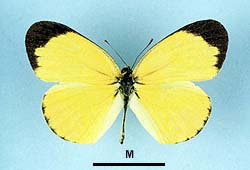The following butterflies consist of the lesser known urban butterflies, or are migrants from
the northern pastoral areas which will breed in southern areas if the conditions are right.
Eliena Rush-skipper
(Trapezites eliena)
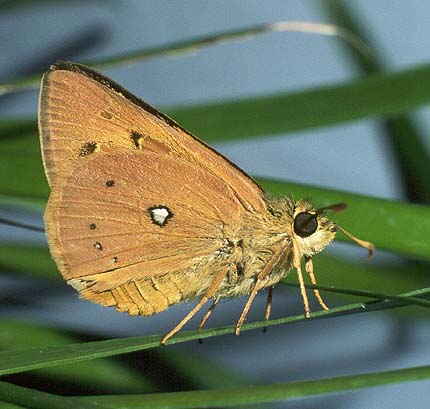
Symmomus Rush-skipper
(Trapezites symmomus)
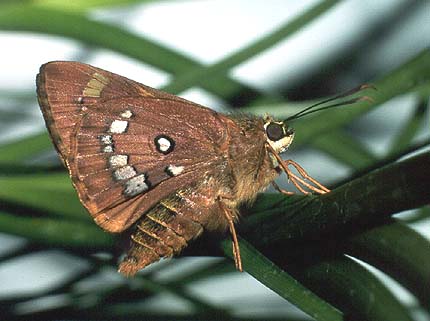
Foodplant: Spiny-headed mat-rush (Lomandra longifolia).
Remarks: These skippers are for people living in Mt Gambier and adjacent areas of the extreme Lower Southeast. If every house garden in the area had a single plant of this rush, then these two skippers would no longer be threatened in South Australia. The plant grows into a broad-leaved small tussock to 1/2 m high, very tough and looks good.
Chequered Swallowtail
(Papilio demoleus)
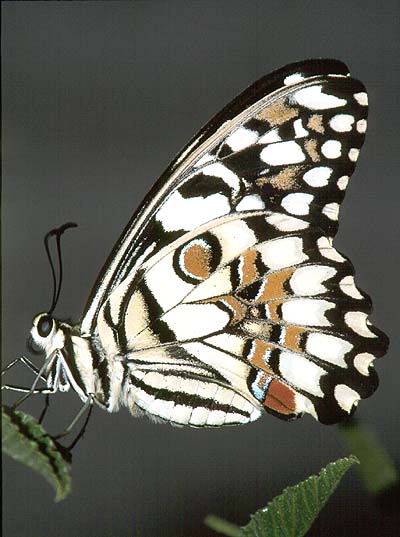
Foodplant: Perennial native verbines and scurf peas (Cullen or Psoralea).
Remarks: Plant in thickets, as single plants may take several years to fully develop.
Flame Sedge-skipper
(Hesperilla idothea)
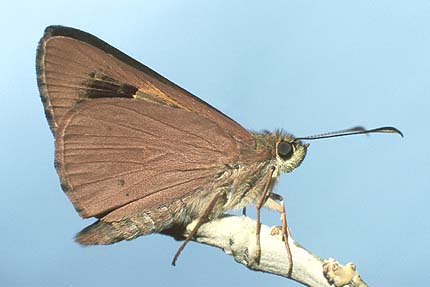
Chrysotricha Sedge-skipper
(Hesperilla chrysotricha)
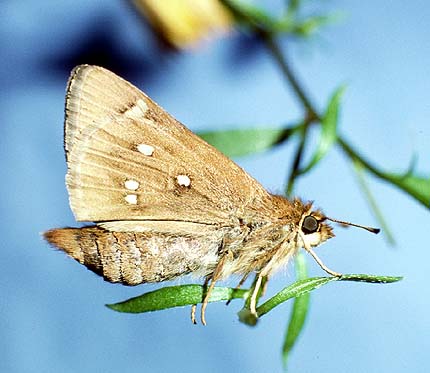
Donnysa Sedge-skipper
(Hesperilla donnysa)
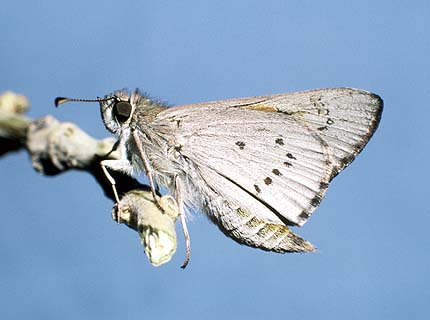
Foodplant: The large saw-sedges (Gahnia sieberiana, G. trifida, G. radula and G. filum).
Remarks: For people living in the cool wetter areas along the South Mt Lofty
Range. G. sieberiana will grow wherever blackberries grow, but prefers wet feet.
G. radula likes cool, shady, high rainfall areas, but not wet feet.
G. trifida likes acid soil and wet feet in the foothills and cool areas of the plains.
For people living in coastal, estuarine or lake areas. G. filum likes alkaline soil
and tolerates brackish water, but needs wet feet. All plants grow into small clumps, similar
to (but not as large) as pampas grass.
Caper White
(Belenois java)
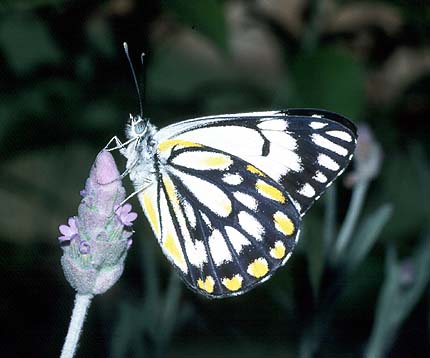
Foodplant: Native orange or tree caper (Capparis mitchelii). The best garden plant is the edible caper bush (Capparis spinosa).
Remarks: The tree caper is very slow growing and only thrives in hot northern areas and may not establish in the cooler southern parts of the state. The bush caper is a better proposition, but it too likes hot conditions. In the early years of the plant's growth the caterpillars will have to be removed as they will quickly eat all of the edible vegetation causing a stunting of the plant. In later years the caterpillars may require thinning.
Amaryllis Azure
(Ogyris amaryllis)

Foodplant: Most Amyema mistletoes. The best are the wire-leaf mistletoe (Amyema preissii) and the melaleuca mistletoe (Amyema melaleucae). The wire-leaf mistletoe uses many wattles (Acacia) as a host, such as blackwood (Acacia melanoxylon), Cootamundra wattle (Acacia baileyana), sticky wattle (Acacia dodonaeifolia), and the hills wirilda (Acacia retinodes). The melaleuca mistletoe uses the black tea-tree (Melaleuca lanceolata) as a host.
Remarks: The foodplant should only be propagated if the butterfly is known to still occur in the area.
Two spotted Lineblue
(Nacaduba biocellata)

Foodplant: Wattle (Acacia).
Remarks: Caterpillars eat the young flower buds.
Bitterbush Blue
(Theclinesthes albocincta)

Foodplant: Bitter or water bush (Adriana quadripartita form klotzschii).
Remarks: The foodplant will grow in most areas, but the butterfly is only likely to use the plant in coastal dune areas. The plant grows into large, bright green, leafy bushes, which can be readily cut back if necessary. The male flowering plant is the most attractive and the most suitable as a foodplant.
Saltbush Blue
(Theclinesthes serpentata)

Foodplant: Salt and goosefoot bushes. Atriplex and Rhagodia are attractive, very tough, low growing bushes. Grey leaved plants require full sun, while green leaved Rhagodia does best in partial shade.
